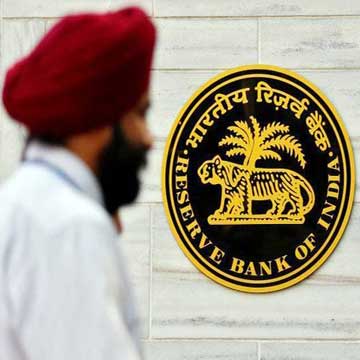 Mumbai:
Mumbai: The Reserve Bank of India on Wednesday left the repo rate and the reverse repo rate unchanged at 6 per cent and 5.75 per cent, respectively. In its fourth bi-monthly monetary policy review for 2017-18, five of six Monetary Policy Committee (MPC) members voted for retaining the policy rates.
The cash reserve ratio (CRR) too was left unchanged at 4 per cent. The primary reason behind no change in the policy rates reflects the RBI's focus on inflation control, and its analysis of India's strong economic prospects.
At the Monetary Policy Committee meeting, Chetan Ghate, Pami Dua, Michael Debabrata Patra, Viral V Acharya and Urjit R Patel were in favour of keeping the repo rate unchanged while Ravindra H Dholakia voted for a policy rate reduction of 25 basis points.
Here are some key takeaways from RBI's monetary policy statement.
Inflation to remain between 4.2-4.6 per centThe October bi-monthly statement projected that the inflation -already at a seven-month high - will rise and range between 4.2-4.6 per cent in the second half of this year. The inflation path will be influenced by several factors, including the impact of increase in house rent allowance (HRA) by the Centre, and there's is a risk that this upward trajectory may continue in the near-term, said the RBI. The retail inflation measured by year-on-year change in the consumer price index (CPI) recorded a seven-month high in October. The food inflation declined sharply in September but bounced back in October due to vegetables and fruits price rise. The RBI said the farm loan waivers, partial roll back of excise duty, and Goods and Services Tax rate cuts may also affect inflation.
Reforms to boost growth prospectsIn the Monetary Policy Committee (MPC) assessment, there have been several significant developments including raise in the capital from the primary capital market, ease of doing business, the recapitalisation of public sector banks and tightening of the insolvency and bankruptcy code (IBC), which auger well for growth prospects. However, it retained the growth forecast at 6.7 per cent for 2017-18 even though the gross value added (GVA) in the second quarter rose to 6.3 per cent.
Global economies gain momentumThe RBI said the global economic powerhouses like the US, and the Euro zone, and Japan also gained momentum in the past quarter, with uptick momentum in private consumption, investment activity and net exports. Accommodative monetary policy, strong job gains and external demand also contributed to the factor, said the central bank. Talking about macro-level global economic trend, the RBI said the latest World Trade Organisation (WTO) report indicates a loss of momentum in global trade due to declining export orders. Besides, it said, crude oil prices touched a two-and-a-half-year high in early November on account of the Organisation of the Petroleum Exporting Countries' (OPEC) efforts to rebalance the market.
Production to pick up in Q3According to the Reserve Bank's Industrial Outlook Survey (IOS), the production is expected to pick up in Q3 as order books are rising. The RBI suggested a mixed picture for Q3 citing core industries' flat growth in October. The services sector activity has remained mixed in October, said the central bank, suggesting that the sentiments on service sector activity for Q3 are upbeat. The RBI said the sharp acceleration in industrial activity sequentially accelerated the growth of real gross value added (GVA) in Q2. The GVA growth in manufacturing got a boost due to high demand and re-stocking post goods and services tax (GST) implementation.
Rationalising charges on debit card transactionsThe Reserve Bank today decided to rationalise charges on debit card transactions based on category of merchants with a view to giving "further fillip" to digital payments. In its 'Statement on Developmental and Regulatory Policies', released along with the resolution of Monetary Policy Committee (MPC), the RBI said that in recent times debit card transactions at 'Point of Sales' have shown significant growth. "With a view to giving further fillip to acceptance of debit card payments for purchase of goods and services across a wider network of merchants, it has been decided to rationalise the framework for Merchant Discount Rate (MDR) applicable on debit card transactions based on the category of merchants," it said.
MDR is the rate charged to a merchant by a bank for providing debit and credit card services. An RBI draft report had made a case for restructuring MDR on the basis of merchant turnover rather than the present slab-rate based on transaction value. The revised MDR, RBI said, aims at achieving the twin objectives of increased usage of debit cards and ensuring sustainability of the business for the entities involved. # Source: BI
 Mumbai: The Reserve Bank of India on Wednesday left the repo rate and the reverse repo rate unchanged at 6 per cent and 5.75 per cent, respectively. In its fourth bi-monthly monetary policy review for 2017-18, five of six Monetary Policy Committee (MPC) members voted for retaining the policy rates.
Mumbai: The Reserve Bank of India on Wednesday left the repo rate and the reverse repo rate unchanged at 6 per cent and 5.75 per cent, respectively. In its fourth bi-monthly monetary policy review for 2017-18, five of six Monetary Policy Committee (MPC) members voted for retaining the policy rates. 